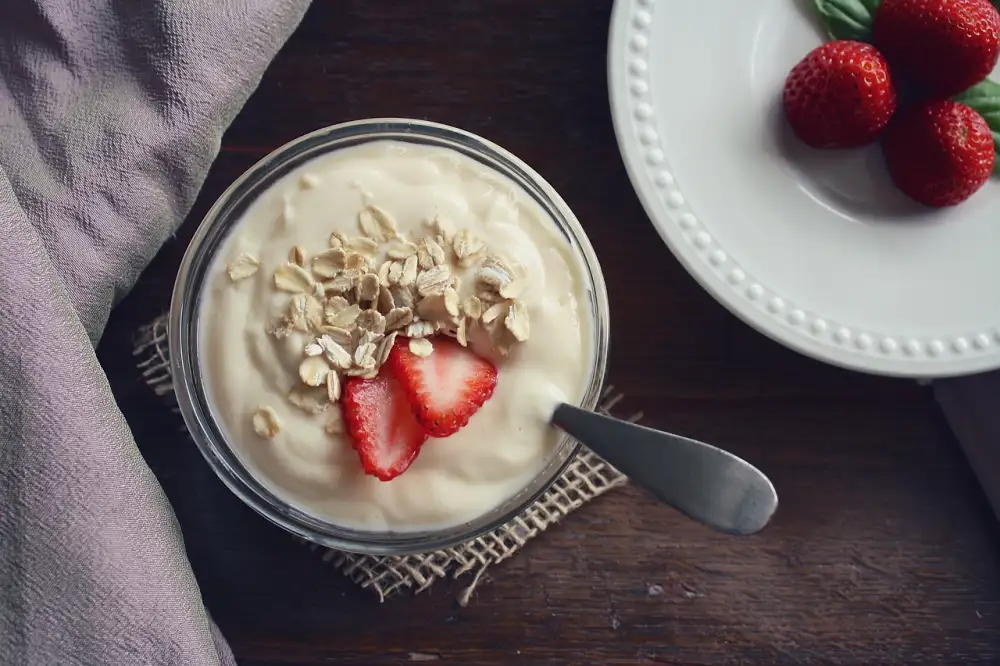Unlocking the Delightful World of Curds and Whey: Elevate Your Food Experience Today

Curds and whey have been a part of human diet for centuries, yet many people are still unfamiliar with these versatile dairy products. From their humble beginnings as a byproduct of cheese-making, curds and whey have evolved into culinary delights enjoyed around the world. In this article, we will unlock the delightful world of curds and whey, exploring their origins, nutritional benefits, culinary uses, and even provide tips on how to make them at home. So get ready to elevate your food experience with the magic of curds and whey!
What are Curds and Whey?
Curds and whey are two components that form when milk undergoes the process of curdling. Curds are the solid portion, while whey is the liquid part. The curdling process occurs when an acid or enzyme is added to milk, causing the proteins to coagulate and separate from the liquid. The curds have a soft, creamy texture, while the whey is slightly tangy and watery. These two elements can be used in various culinary preparations, adding richness and depth of flavor to dishes.
The Process of Curdling Milk
The process of curdling milk involves the separation of milk into two components: curds and whey. This natural process occurs when an acid, such as lemon juice or vinegar, is added to warm milk. The acid causes the proteins in the milk, specifically casein, to coagulate and form solid curds. The liquid that remains is known as whey. The curds can then be drained and pressed to remove excess moisture, resulting in a firm texture similar to cheese. This simple yet fascinating process is the foundation for creating a variety of delicious dairy products.
Nutritional Benefits of Curds and Whey
Curds and whey are not only delicious, but they also offer a range of nutritional benefits. Curds are packed with protein, which is essential for muscle growth and repair. They are also a good source of calcium, promoting strong bones and teeth. Whey, on the other hand, is rich in amino acids that aid in muscle recovery and boost the immune system. Additionally, both curds and whey contain probiotics that support gut health and improve digestion. Incorporating curds and whey into your diet can provide you with a wholesome dose of nutrients to elevate your overall well-being.
Culinary Uses of Curds and Whey
Curds and whey are incredibly versatile ingredients that can be used in a variety of culinary creations. The creamy curds can be enjoyed on their own or incorporated into dishes to add a rich and tangy flavor. They can be used as a topping for pancakes, waffles, or toast, adding a delightful creaminess to your breakfast.
In savory dishes, curds can be added to salads, sandwiches, or wraps for an extra burst of flavor and texture. They also work well in dips and spreads, giving them a creamy consistency. Whey, on the other hand, can be used as a liquid base for soups, stews, or sauces, adding depth and richness to the dish.
Curds and whey are also commonly used in baking. Curds can be added to cakes, muffins, or scones to make them moist and tender. Whey can be used as a replacement for water or milk in bread recipes, resulting in a softer and more flavorful loaf.
The possibilities are endless when it comes to incorporating curds and whey into your cooking. Experiment with different recipes and let your creativity soar. These versatile ingredients will elevate your dishes to new heights of deliciousness.
Popular Dishes and Recipes with Curds and Whey
Curds and whey are incredibly versatile ingredients that can be used in a wide range of dishes. One popular dish is cottage cheese, which is made by adding salt to the curdled milk and then draining off the whey. Cottage cheese can be enjoyed on its own or used as a topping for salads, sandwiches, or baked potatoes.
Another delicious option is paneer, a fresh cheese commonly used in Indian cuisine. Paneer is made by curdling milk with lemon juice or vinegar and then straining off the whey. It can be cooked in various ways such as sautéed, grilled, or added to curries.
For those with a sweet tooth, ricotta cheese is a must-try. Ricotta is made by heating the whey left over from cheesemaking and adding an acid like vinegar or lemon juice. It can be used in desserts like cannoli, cheesecake, or even as a filling for pancakes.
Lastly, let's not forget about the classic combination of curds and whey in dishes like macaroni and cheese. The creamy texture of the melted cheese combined with pasta creates a comforting and satisfying meal.
These are just a few examples of how curds and whey can elevate your culinary experience. Get creative in the kitchen and explore the endless possibilities that these ingredients have to offer!
Curds and Whey in Different Cultures
Curds and whey have been enjoyed in various cultures around the world for centuries. In India, curds are a staple in many dishes and are used to make refreshing drinks like lassi. In Greece, they are a key ingredient in traditional tzatziki sauce, adding a tangy flavor to grilled meats and vegetables. In Italy, curds are transformed into creamy ricotta cheese, which is used in lasagna and cannoli. In Scandinavian countries, whey is fermented to create a popular beverage called "kefir." No matter where you go, curds and whey have found their way into the hearts and kitchens of people worldwide.
Tips for Making Curds and Whey at Home
1. Start with fresh milk: Use high-quality, pasteurized milk to ensure the best results.
2. Choose the right acid: Lemon juice or white vinegar are commonly used to curdle the milk. Experiment with different acids to find your preferred taste.
3. Heat the milk slowly: Gradually heat the milk over low heat, stirring occasionally to prevent scorching.
4. Add the acid: Once the milk reaches a specific temperature (around 180°F), slowly add the acid while stirring gently.
5. Observe curdling: As soon as you see solid curds forming and separating from the liquid whey, remove from heat.
6. Strain and separate: Line a sieve or colander with cheesecloth or a clean cloth and pour the mixture into it. Let it sit for a few minutes until most of the whey has drained away.
7. Press if desired: If you prefer firmer curds, place a weight on top of the cloth-wrapped curds to press out more whey.
8. Refrigerate and store: Once strained, transfer the curds to an airtight container and refrigerate for up to one week.
By following these simple tips, you can easily make delicious curds and whey at home, adding a touch of homemade goodness to your culinary creations.
Where to Find Curds and Whey Products
Curds and whey products can be found in various places, allowing you to easily incorporate them into your culinary adventures. One of the most common places to find curds and whey is at your local grocery store or supermarket. Look for them in the dairy section, usually near other cheese products.
Specialty cheese shops are another great option for finding a wide variety of curds and whey products. These shops often carry artisanal cheeses made from different types of milk, resulting in unique flavors and textures.
If you prefer the convenience of online shopping, there are several websites that offer a wide selection of curds and whey products. You can browse through different brands, flavors, and even order directly from the comfort of your own home.
Additionally, farmers markets are a fantastic place to find locally produced curds and whey products. Here, you can connect with local farmers who specialize in dairy products and get a taste of their freshly made offerings.
Don't forget to explore international grocery stores or specialty food stores that cater to specific cuisines. They may have curds and whey products from different cultures, allowing you to experiment with new flavors and cooking techniques.
No matter where you choose to look for curds and whey products, always check the expiration dates and ensure they are stored properly to maintain their freshness. So go ahead, embark on a delightful journey by seeking out these versatile ingredients!
In conclusion, curds and whey are not just ordinary dairy products; they are culinary treasures that can elevate your food experience. From their rich nutritional profile to their diverse culinary uses, curds and whey offer a world of possibilities in the kitchen. Whether you enjoy them in traditional dishes or experiment with new recipes, these versatile ingredients are sure to add a delightful touch to your meals. So why not embrace the versatility of curds and whey today and unlock a whole new level of culinary delight?
Published: 20. 11. 2023
Category: Food



